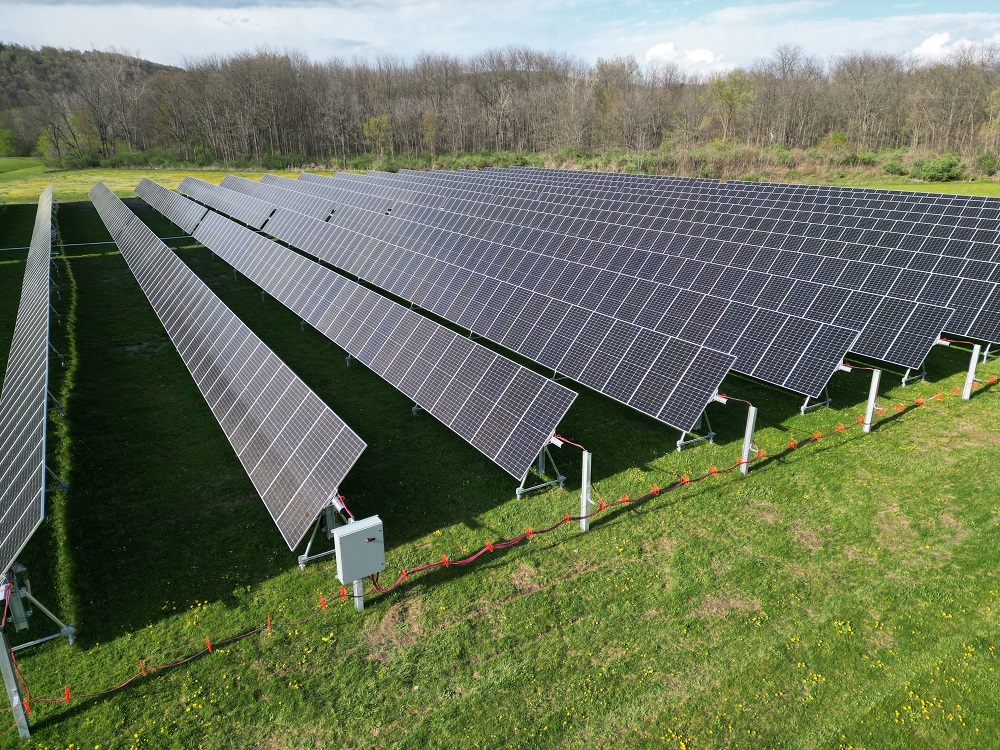After clean energy projects with financial backing from New York State were the first to gain support under an expanded U.S. Department of Energy loan program, Sam Schacht, project manager with the Clean Energy States Alliance, said on a webinar that his organization hopes that many other state programs “will unlock billions of dollars” of loan support from the program.
Solar projects and other clean energy projects are eligible for DOE loan support of up to 80% of project costs under DOE’s Title 17 clean energy financing authority, if the projects first win “meaningful support” from a “state energy financing institution” or SEFI.
DOE has determined that New York State has a state program that qualifies as a SEFI, as do at least seven other states, as shown in DOE’s SEFI Toolkit. Yet most states “would have multiple entities that would qualify as a SEFI,” said Hans Riemer, senior consultant and state and local outreach lead at DOE’s Loan Programs Office (LPO), on the webinar.
A state agency that qualifies as a SEFI may take the lead on identifying solar or other clean energy projects that could qualify for both state and DOE support, Riemer said, for example by issuing a request for proposals to the private sector. He said a state grant or investment of 5% of the project cost would meet the required “meaningful support” threshold.
Or a project developer could take the lead, Riemer said, by first identifying what state agency finances energy projects that reduce emissions, and then talking to state officials about providing SEFI support so the project could then apply to LPO for loan support.
Riemer added that project developers can also work with LPO regarding project planning “in an iterative process to help you put forward the best project.”
A state may “land projects,” Riemer said, by publishing information about its SEFI funding program, so that “projects can find you and you can get multiples of your state investment deploying in the state.”
Because of the “considerable costs” in LPO’s loan application process, most LPO borrowers have determined that LPO support “only penciled” for larger projects in excess of $100 million, Riemer said. As a result, he said “we’re seeing approaches to multi-state SEFI support to help ensure sufficient scale to work with LPO.” Another possibility is that a single state with “a lot of projects that are smaller than $100 million” might seek to access LPO’s capital in order to lend to those projects, he added. “That comes with a lot of requirements, so it comes with an intense level of effort, but there are definitely states where this is the match.”
Riemer described a multitude of other approaches to securing SEFI program loan support, while officials from the New York State Energy Research and Development Authority, New York’s SEFI, described their state program that backs clean energy projects. The Clean Energy States Alliance posted a recording of the webinar.
The Clean Energy States Alliance has 18 member states plus the District of Columbia, and supports both member and non-member states.
This content is protected by copyright and may not be reused. If you want to cooperate with us and would like to reuse some of our content, please contact: editors@pv-magazine.com.








By submitting this form you agree to pv magazine using your data for the purposes of publishing your comment.
Your personal data will only be disclosed or otherwise transmitted to third parties for the purposes of spam filtering or if this is necessary for technical maintenance of the website. Any other transfer to third parties will not take place unless this is justified on the basis of applicable data protection regulations or if pv magazine is legally obliged to do so.
You may revoke this consent at any time with effect for the future, in which case your personal data will be deleted immediately. Otherwise, your data will be deleted if pv magazine has processed your request or the purpose of data storage is fulfilled.
Further information on data privacy can be found in our Data Protection Policy.